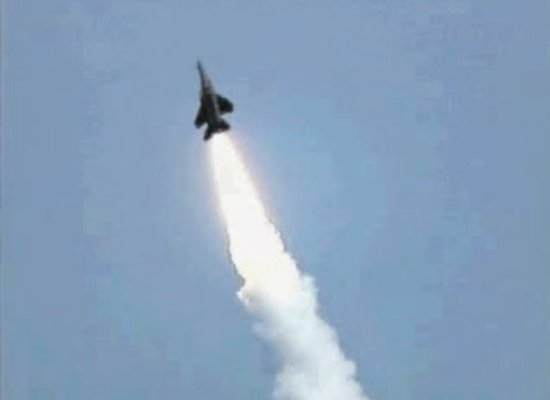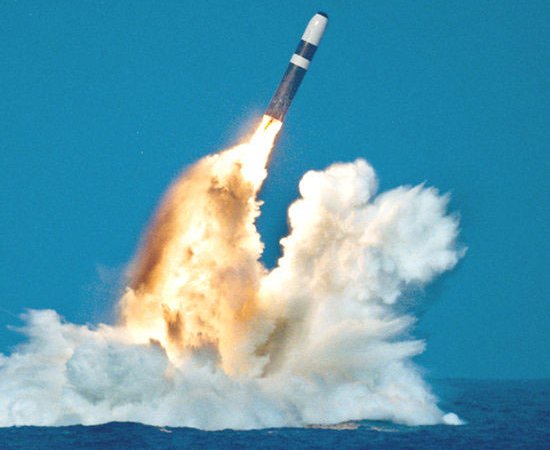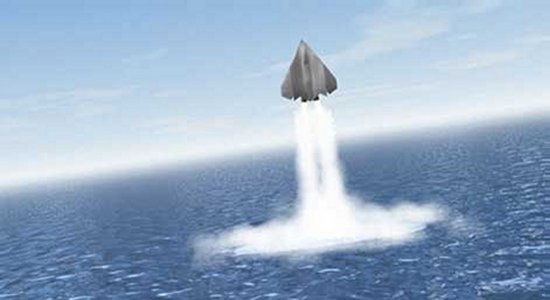|
||||||||||
|
|
||||||||||
|
||||||||||
|
|
||||||||||



As you suggested in your question, this video is a fake. Though clever and amusing, the creator has simply superimposed photos of the F-15 Eagle fighter aircraft over the launch of a missile from a submarine. You can see many similarities between the above screen grabs and the following photo of the Trident submarine launched ballistic missile (SLBM) during a test launch.

In actuality, the scenario portrayed in the video is impossible since a vehicle like the F-15 is not designed to withstand the stresses that would be imposed by the force of rushing water during this type of launch. However, missiles like the Tomahawk cruise missile are often built to survive an underwater launch. This weapon is ejected from a submarine by compressed air and accelerated into the atmosphere by a solid rocket booster. Once airborne, the Tomahawk deploys folded wings to generate lift and opens an air inlet to feed its jet engine.
It is interesting to note, however, that the Defense Advanced Research Project Agency (DARPA) is funding a program to develop a submarine launched unmanned aircraft. Known as the Cormorant, the vehicle folds up much like a missile to fit within the narrow launch tubes of a submarine but deploys wings after breaking the ocean surface.

Intended as a strike reconnaissance vehicle, the Cormorant would be fitted with either surveillance gear or short-range weapons. The design proposed by Lockheed Martin features folding gull wings that hinge around the body for packaging inside missile tubes and a titanium body that resists salt water corrosion. To ensure structural integrity at the high pressures that exist underwater, empty spaces are filled with a plastic foam that resists crushing and much of the body is pressurized with inert gas. The design also employs inflatable seals to keep water from penetrating the engine or weapon bay compartments.
Another factor important to using such a vehicle is maintaining the secrecy of the parent submarine. Unlike missile launches that readily give away the submarine's location, the Cormorant concept would quietly glide from its launch tube and float to the surface while the submarine cruises away. The UAV would then fire its booster to gain altitude, deploy its wings and open its engine inlet to achieve cruise, and fly towards its patrol area. Upon completion of its mission, the UAV would land at sea to be retrieved by a robotic underwater vehicle and brought back to the submarine for reuse.

DARPA is funding development of the recovery vehicle as well as models to evaluate splashdown concepts. These
tests will assist in determining the feasibility of the concept. A decision on whether to proceed with an actual
flyable prototype of the rather complex machine is due to be made in late 2006.
- answer by Molly Swanson, 30 April 2006
Related Topics:
Read More Articles:


|
Aircraft | Design | Ask Us | Shop | Search |

|
|
| About Us | Contact Us | Copyright © 1997- | |||
|
|
|||